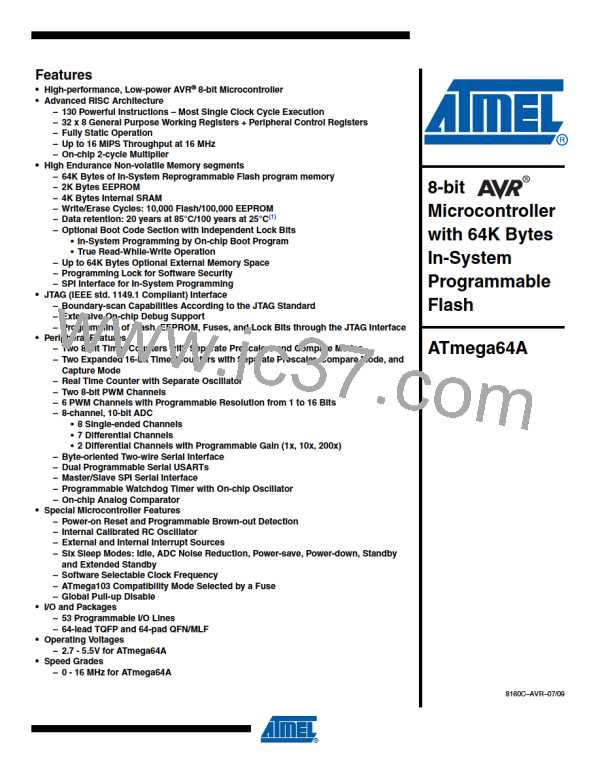ATmega64A
• Bits 7:0 – TWD: TWI Data Register
These eight bits constitute the next data byte to be transmitted, or the latest data byte received
on the Two-wire Serial Bus.
21.9.5
TWAR – TWI (Slave) Address Register
Bit
(0x72)
7
6
5
TWA4
R/W
1
4
TWA3
R/W
1
3
TWA2
R/W
1
2
TWA1
R/W
1
1
TWA0
R/W
1
0
TWGCE
R/W
0
TWA6
TWA5
R/W
1
TWAR
Read/Write
Initial Value
R/W
1
The TWAR should be loaded with the 7-bit slave address (in the seven most significant bits of
TWAR) to which the TWI will respond when programmed as a slave transmitter or Receiver, and
not needed in the Master modes. In multimaster systems, TWAR must be set in masters which
can be addressed as slaves by other masters.
The LSB of TWAR is used to enable recognition of the general call address (0x00). There is an
associated address comparator that looks for the slave address (or general call address if
enabled) in the received serial address. If a match is found, an interrupt request is generated.
• Bits 7:1 – TWA: TWI (Slave) Address Register
These seven bits constitute the slave address of the TWI unit.
• Bit 0 – TWGCE: TWI General Call Recognition Enable Bit
If set, this bit enables the recognition of a General Call given over the Two-wire Serial Bus.
229
8160C–AVR–07/09

 ATMEL [ ATMEL ]
ATMEL [ ATMEL ]